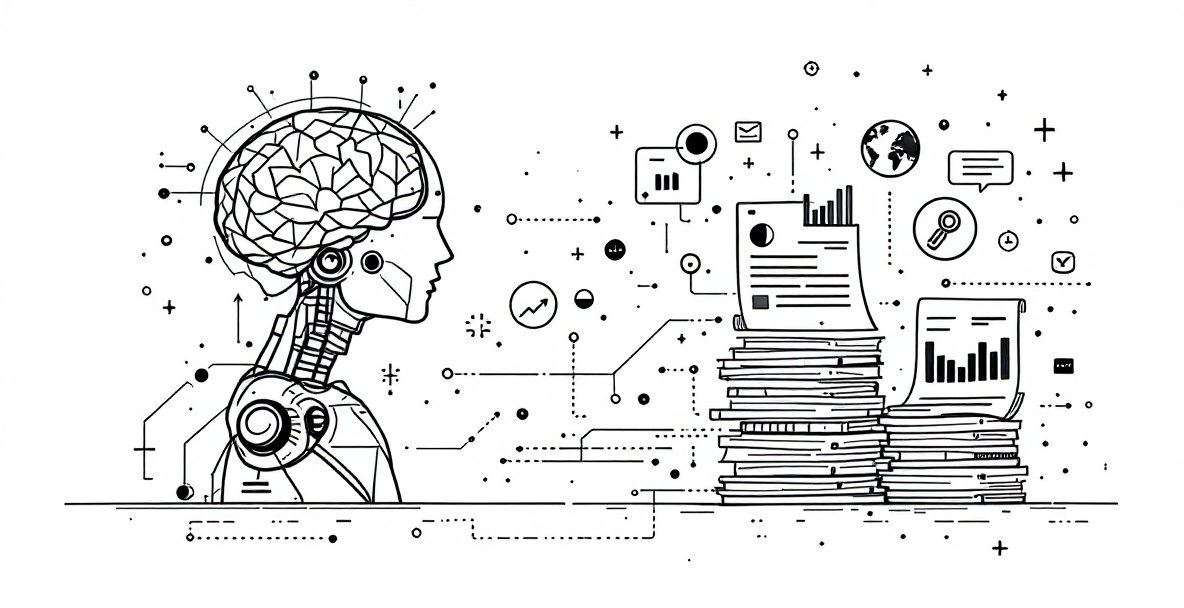In the battle for online visibility, content creators constantly face a challenging balancing act: creating content that satisfies search engines while genuinely engaging human readers. The traditional approach often forces us to choose between robotic, keyword-stuffed content that ranks well but fails to connect, or engaging content that readers love but search engines overlook. At SeoFlow, we've cracked the code on this challenge by harnessing AI technology that honors both technical SEO requirements and human engagement factors. Let's explore how this new approach is transforming content creation.
The Content Creation Conundrum: Balancing SEO and Reader Engagement

The tension between creating content for search engines versus human readers has plagued marketers for years. Many content teams find themselves stuck in an endless cycle of trying to please algorithms while somehow maintaining the creative spark that resonates with actual people. This struggle isn't just frustrating—it's also extremely inefficient.
The Evolution of SEO Content
SEO content has undergone dramatic transformations since the early days of the internet. What began as simple keyword stuffing evolved into more sophisticated approaches as search engines became smarter. Google's algorithms now prioritize user experience, engagement metrics, and content quality over simplistic keyword optimization.
In the early 2000s, ranking well meant cramming as many keywords as possible into your content—often at the expense of readability. As search engines evolved, so did content strategies. The Panda and Penguin updates marked turning points, penalizing low-quality content and rewarding websites that provided genuine value. Today's algorithms use machine learning to understand context, semantics, and user intent—fundamentally changing what makes content "SEO-friendly."
This evolution means that the historical division between "SEO content" and "reader-friendly content" has largely disappeared. Modern search engines want what readers want: valuable, relevant, well-structured information that addresses specific needs.
Why Traditional Content Creation Methods Fall Short
Despite these algorithm advancements, many content creators still approach SEO and engagement as separate considerations. Traditional content creation typically follows a linear process: keyword research, outline creation, writing, and basic optimization. This approach creates several problems:
First, it treats SEO as an afterthought rather than an integral part of the content strategy. Second, it often fails to deeply analyze what's already performing well for specific search intents. And third, it rarely incorporates systematic performance measurement to improve future content.
Most importantly, traditional methods struggle to scale efficiently without sacrificing quality. As content demands increase, teams face the impossible choice between quantity and quality—neither of which alone can drive sustainable organic growth.
Understanding AI-Powered Content Analysis

The breakthrough in modern content creation comes from AI's ability to analyze and understand content in ways similar to how search engines and humans process information. This creates opportunities for content that satisfies both audiences simultaneously.
How AI Reads and Understands Content
AI content analysis operates on multiple levels simultaneously. At the most basic level, it examines technical SEO elements like keyword usage, meta descriptions, and heading structure. But advanced AI goes much deeper, evaluating semantic relationships, topical relevance, and contextual meanings.
Through natural language processing (NLP), AI can now identify entities, concepts, and relationships within text. This mirrors how modern search engines interpret content—not just by tracking keywords, but by understanding the subject matter itself. Our AI content generation platform leverages these capabilities to create content that speaks both languages fluently.
What's particularly fascinating is how AI can now predict human engagement by analyzing linguistic patterns, readability scores, emotional tone, and narrative structures that historically perform well with readers. This creates a feedback loop where content can be continuously refined to improve both search visibility and reader satisfaction.
Key Metrics That Matter
When analyzing content performance, certain metrics prove particularly valuable in predicting both search ranking potential and reader engagement:
Comprehensive coverage stands out as a critical factor. Content that thoroughly addresses all aspects of a topic consistently outperforms shallow content targeting the same keywords. AI can evaluate a piece against top-performing content to identify coverage gaps.
Content depth also significantly impacts performance. Modern search algorithms can distinguish between surface-level summaries and genuinely insightful analysis. AI tools measure depth through factors like specificity of information, expert vocabulary usage, and supporting evidence.
Readability metrics help ensure content remains accessible to target audiences. While technical topics naturally require more complex language, unnecessarily complicated writing hurts both engagement and rankings. Artificial intelligence can assess reading level, sentence complexity, and clarity to optimize for the intended audience.
Engaging content also demonstrates strong topical relevance signals through semantically related terms, proper entity coverage, and logical content structure—all factors that machine learning algorithms can measure and optimize.
The Role of User Intent
Perhaps the most revolutionary aspect of AI content analysis is its ability to understand and optimize for user intent. Search queries reflect diverse user goals—some seek information, others want to make purchases, and still others need to complete specific tasks.
AI can now categorize content by intent alignment and predict which formats, structures, and information types will best satisfy specific search purposes. This capability transforms content creation from a guessing game into a strategic process where each piece is deliberately engineered to match what users actually want when typing specific search terms.
At SeoFlow, our automated content publishing system ensures every piece we create aligns perfectly with the detected user intent behind target keywords. This approach dramatically increases the likelihood of both ranking well and genuinely satisfying the reader's needs.
Leveraging SEO Content Automation Effectively

Content automation represents the next frontier in scaling production without sacrificing quality. However, implementation requires strategic consideration to avoid common pitfalls.
Choosing the Right Automation Tools
The marketplace now offers numerous AI content creation tools, each with distinct strengths and limitations. When evaluating options, consider these critical factors:
First, examine the AI's training data—tools trained on high-quality, diverse content sources generally produce better results than those with limited training sets. Second, assess customization capabilities—the ability to tailor outputs to your brand voice and style requirements proves essential for consistent quality.
Integration capabilities also significantly impact workflow efficiency. Tools that connect directly with your content management system, analytics platforms, and publishing channels eliminate friction points. The SeoFlow platform integrates seamlessly with WordPress, Ghost, Notion and other major publishing systems to streamline the entire process.
Ultimately, the best automation tools enhance human creativity rather than attempting to replace it. Look for solutions that handle repetitive tasks while preserving space for strategic thinking and creative direction.
Setting Up Your Automation Workflow
Effective content automation requires thoughtful workflow design. Start by mapping your current content production process, identifying bottlenecks and repetitive tasks prime for automation. Common automation opportunities include:
Topic research and keyword analysis can be dramatically accelerated through AI systems that evaluate search volumes, competition levels, and content gaps. Content outlining also benefits from automation as AI can analyze top-performing content to create comprehensive structures addressing all relevant subtopics.
Draft generation represents another time-saving opportunity, with AI capable of producing initial content versions based on approved outlines. Our automated scheduling system then ensures content publishes at optimal times for maximum visibility.
The most effective workflows maintain human oversight at strategic checkpoints—typically during outline approval, draft revision, and final publishing approval. This balance ensures efficiency without sacrificing quality control.
Common Automation Pitfalls to Avoid
While automation offers tremendous benefits, several common mistakes can undermine its effectiveness:
Over-automation sometimes leads to generic content lacking distinctive perspective. Remember that uniqueness remains valuable for both search engines and readers—maintain a balance between efficiency and originality.
Inadequate customization results in content that feels disconnected from your brand voice. Configure your automation tools with detailed brand guidelines and tone preferences to maintain consistency across all outputs.
Perhaps most importantly, treating automation as a replacement for strategy rather than an enabler of it undermines long-term success. The best results come from using automation to execute a thoughtful content strategy, not as a substitute for having one.
Human Touch: Making AI-Generated Content Engaging

While automation handles technical aspects effectively, truly engaging content still requires human creativity and emotional intelligence. The most successful content programs leverage AI capabilities while incorporating distinctly human elements.
Adding Personality to Automated Content
Automated content sometimes lacks the personal touch that builds reader connections. Strategic personalization counteracts this tendency by incorporating several key elements:
Brand storytelling provides context that pure information lacks. Weaving your organization's unique perspective, experiences, and values into content creates resonance that generic material cannot achieve. The best content feels like it comes from someone, not something.
Incorporating authentic perspectives through personal anecdotes, expert opinions, and real-world examples transforms technical information into compelling narratives. Even brief personal observations can significantly enhance reader connection.
According to recent findings on ethical marketing practices, conversational elements—questions, colloquialisms, and direct reader address—further humanize content. These techniques create the sense of dialogue rather than monologue, increasing engagement and time-on-page metrics that search engines increasingly value.
Balancing Data and Creativity
The most effective content combines data-driven insights with creative expression—a balance AI alone struggles to achieve. The optimal approach leverages AI for data analysis while preserving human judgment for creative decisions.
When crafting content, use AI tools to research facts, statistics, and competitive analysis. This creates a solid foundation of accuracy and comprehensiveness. Then, apply creative judgment to determine presentation style, emotional tone, and narrative approach based on your understanding of audience preferences.
As data from Statista reveals, visual elements provide another opportunity for human creativity to enhance AI-generated content. Custom graphics, relevant images, and thoughtful design elements significantly increase engagement with otherwise text-heavy material.
Finding this balance means viewing AI as a collaborator rather than a replacement. The technology handles information gathering and organization, while human creators focus on storytelling, connection, and the subtle elements that transform information into inspiration.
Measuring Success and Optimizing Results
Like any strategic initiative, content automation requires systematic measurement and continuous improvement to deliver maximum value.
Key Performance Indicators
Effective measurement begins with selecting appropriate metrics aligned with your content objectives. While every organization's goals differ, several indicators provide particularly valuable insights:
Search visibility metrics—including ranking positions, featured snippet appearances, and search impression share—demonstrate SEO effectiveness. Track these for primary target keywords as well as semantic variations to assess overall topic authority.
Engagement indicators reveal how well content resonates with readers once they find it. Time on page, scroll depth, and interaction rates provide better insight into content quality than simple pageview counts. The most valuable content keeps readers engaged throughout the piece.
HubSpot's recent research on AI-generated content shows that conversion metrics connect content performance to business outcomes. These might include email signups, product inquiries, or direct purchases depending on your business model. Even informational content should drive measurable progress toward business objectives.
Brand authority signals, including backlinks, social shares, and brand mentions, indicate wider ecosystem impact. High-quality content naturally attracts references from other content creators, amplifying its value beyond direct traffic.
Action Plan for Implementation
Implementing an AI-powered content strategy requires systematic execution. Consider this phased approach:
Begin with a content audit to establish performance baselines and identify improvement opportunities. Analyze your existing content against key metrics to understand current strengths and weaknesses.
Next, set up your automation infrastructure by selecting appropriate tools and configuring them to align with your brand requirements. Start with a limited scope—perhaps a specific content category—to refine processes before full-scale implementation.
According to 2023 SEO trend analysis from Pakko, developing a measurement framework with clear KPIs reflecting both search performance and reader engagement is essential. Establish regular review cycles to analyze results and identify optimization opportunities.
Create feedback loops where performance data informs future content creation. This continuous improvement process transforms content creation from a creative guesswork into a strategic system that consistently delivers measurable results.
The Future of Content: Humans and AI in Partnership
The most successful content creators of tomorrow won't be those who resist automation or surrender entirely to it—but those who forge effective partnerships between human creativity and artificial intelligence. This collaboration leverages the respective strengths of each: AI's analytical capabilities and processing power combined with human empathy, judgment, and creative vision.
Ready to transform your content strategy with AI-powered automation that satisfies both search engines and readers? Visit SeoFlow today to discover how our platform can streamline your content creation process while maintaining the quality and engagement your audience demands.




